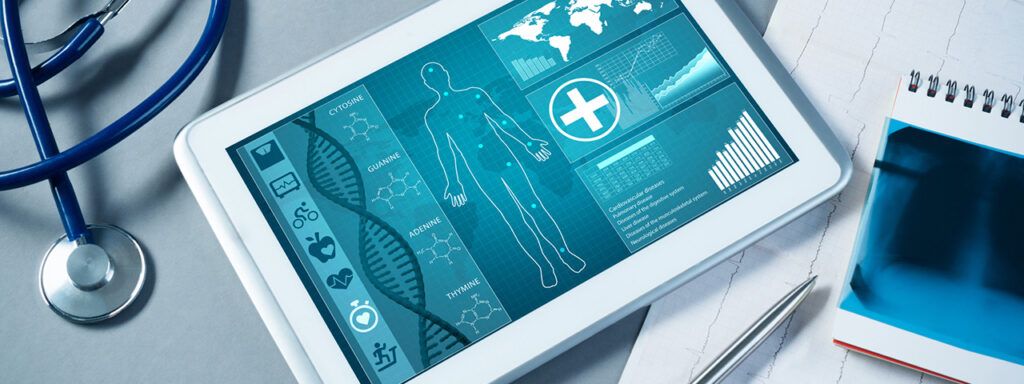
One of the enduring consequences of the COVID-19 pandemic is the backlog of patient appointments, a challenge that is expected to persist. However, remote patient monitoring offers a potential solution to this ongoing problem, providing much-needed assistance to patients and clinicians alike.
At any one moment, the majority of hospital beds are occupied, with many of those patients clinically ready to be discharged but not able to be transferred to an environment where they will receive the appropriate care. This leads to a situation where patients in need of hospitalization or emergency care may have to wait for a bed.
Virtual wards powered by remote patient monitoring (RPM) technologies could play a significant role in expanding medical care outside of the hospital setting, allowing patients to get admitted, transferred, or discharged from the hospital swiftly, freeing up beds for patients that urgently need emergency care.
Virtual wards integrate technology, remote patient monitoring, and telehealth services, allowing clinicians to diagnose and treat patients remotely, while also offering medical advice. This enables patients to receive high-quality care in the comfort of their own home.
Created to replace hospital admissions and expedite patient discharges, virtual wards are regarded as a safe and effective substitute for hospital care, especially for elderly and frail individuals.
Remote Patient Monitoring Solutions
There are several key RPM technological solutions powering virtual wards and remote-based care. Remote patient monitoring technologies and services are linked to devices that monitor vital signs—such as blood pressure, heart rate, and blood sugar levels—which help clinicians monitor and analyze a patient’s acute or chronic health condition remotely. This allows clinicians to assess a patient’s medical condition in real-time, facilitating clinical decision-making and timely intervention when needed.
Medical Alert Platforms
RPM platforms enable the remote integration of telehealth devices. For instance, they can connect to movement sensors that help detect falls, issuing an alert if any unusual activity is observed. They can also be linked to pill dispensers, ensuring that medication is released at a designated time and raising an alarm if a patient does not remove the medication from the dispenser.
Social Alarm Services
Social alarms are digital alarm services that promote independent living by enabling automatic and remote non-clinical monitoring of an individual. This is achieved through a combination of behavioral and environmental sensors, alarms, or other methods connected to a smart phone or other communication device.
Social alarms can include wearable devices such as pendants that can be activated by the wearer to request urgent assistance in an emergency. These alarms operate via wireless networks and can detect potential safety issues such as gas leaks or smoke. When triggered, these sensors will automatically send an alert to the monitoring center, which then contacts a caregiver to check on the individual.
Smart Activity Monitors
A non-invasive system that utilizes sensors, machine learning, and automated data communication is essential for monitoring daily activities and identifying deviations from normal patterns. This system plays a critical role in evaluating an individual’s capacity to maintain independence within their community and in promptly identifying potentially life-threatening situations. Additionally, the data generated can provide valuable insights that can help anticipate subtle long-term behavioral changes.
Personalized Healthcare Records Controlled by the Patient
These solutions enable individuals to conveniently access their medical records and associated data from a centralized location. These supplier-provided tools give users the ability to input, retrieve, and share their medical information with a broad range of healthcare practitioners.
Technology-driven healthcare services have a significant potential to revolutionize how individuals participate in and manage their healthcare. The adoption of these technologies can encourage millions of patients to actively manage their healthcare and transform how healthcare services are delivered, ultimately improving efficiency and the level of care offered both inside and outside of the hospital environment.
Future Outlook of Virtual Healthcare
With the ongoing expansion and growing prevalence of virtual wards, technology-driven care solutions are poised to play a growing role in the delivery of efficient and effective healthcare services to patients in the future.
Over the long-term, with advances in point-of-care patient diagnostics and remote patient monitoring, virtual wards are likely to become a standard alternative to receiving healthcare in hospitals for a range of acute health conditions.
Innovative RPM solutions such as Tapestry Health’s range of advanced remote patient monitoring technologies—which include motion sensors, vital sign monitoring, acute and chronic health management, and AI/machine learning technologies that enable problems to be detected before symptoms are even noticed—allow for continuous, around-the-clock monitoring of patients in nursing homes, post-acute care, or post-surgery facilities. This offers reassurance to staff about their patients’ well-being, as any health changes are promptly detected and staff alerted. Remote patient monitoring is beneficial not only for patients, but also prevents nursing staff burnout, all while maintaining the quality of care that patients receive.
